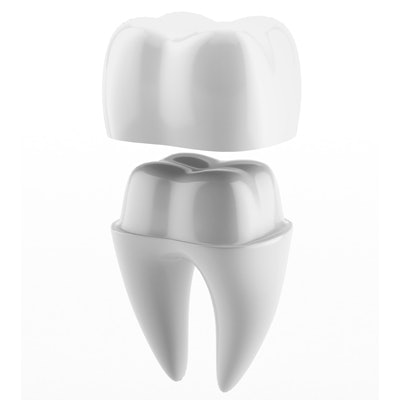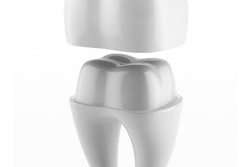
When you are tightening CAD/CAM-fabricated zirconia single-implant crowns into an internal conical seal implant-abutment connection, you know there is going to be some displacement, but how much? And is this displacement enough to affect the proximal contacts and occlusion of the prosthesis?
A new study in the Journal of Prosthetic Dentistry measured this displacement in two different implants and found that, while the mean vertical displacements were higher than the mean displacements in both the mean mesiodistal and buccolingual directions, there was minimal overall displacement when using these crowns.
"The results of this study showed that only the vertical displacement in both implants was statistically significant," the authors wrote (J Prosthet Dent, May 5, 2017).
The study was led by Hanadi Rebeeah, BDS, a specialist from the division of prosthetic dentistry at Hamad Medical in Doha, Qatar, and colleagues from multiple departments at the Ohio State University College of Dentistry and College of Engineering in Columbus, OH.
Application of torque
During screw tightening and the application of torque, a crown may be displaced. Too much displacement can lead to occlusion of the definitive prosthesis and other problems.
The researchers sought to find out if displacement of screw-retained zirconia-milled single crowns (Atlantis, Dentsply Sirona) occurred in a recently introduced internal conical seal implant (Astra EV, Dentsply Sirona) in three dimensions during screw tightening by hand or torque driver. They compared the amount of crown displacement with the previous internal connection implant (OsseoSpeed, Dentsply Sirona).
“The EV implant crowns tended to undergo more vertical displacement than the OsseoSpeed crowns.”
The researchers initially thought there would be no differences in crown displacement within each implant system after subsequent torque application in any direction. They also speculated that there would be no differences between the displacement of crowns in the different implants after torque application in different directions.
The researchers used two identically printed maxillary acrylic resin models (Ibur BioSystems) missing the right central incisor. They virtually planned the implant's location using software (Blue Sky Plan, Blue Sky Bio), printed a surgical guide to standardize the implant placement for both stereolithic models in the edentulous site, and then printed the stereolithic acrylic resin models.
Using the surgical guide, the researchers placed two different internal-connection implant systems (both about 11.5 mm) in the edentulous site in each model. They had fabricated five screw-retained, single zirconia CAD/CAM crowns for each system.
They placed the crown on the implant and hand-tightened the screw until it was not possible to advance the driver. This simulated clinical conditions, during which clinicians may adjust the proximal and incisal contacts of restorations before applying the torque with a torque driver, the authors noted. The restoration screw was then torque-driven with a torque wrench to the recommended 20 Ncm for the OsseoSpeed implant and 25 Ncm for the Astra EV implant.
With a pair of high-resolution cameras to record the relationship between the crown and the model, the team used 3D image correlation to measure and compare crown positions. The group repeated this displacement test three times for each crown.
The crowns on the Astra EV implant tended to undergo more vertical displacement than the crowns on the OsseoSpeed implant, the authors reported (see table below). They attributed this increase in displacement to the difference in torque value applied during the torque process -- as the tightening torque increases, the abutment displacement increases. However, measured displacements were small and did not exceed 14 µm.
The vertical direction had the highest displacement compared with other directions, the researchers found. However, they determined that the differences in displacement directions between the two implants were not statistically significant.
| Crown displacement in the vertical direction | ||||||
| Implants | ||||||
| Astra EV | OsseoSpeed | |||||
| Test | 1 | 2 | 3 | 1 | 2 | 3 |
| Mean | -13.2 | -2.9 | -3.0 | -10.5 | -5.2 | -3.6 |
| ± standard deviation (µm) | 4.3 | 2.3 | 1.9 | 6.0 | 3.18 | 1.6 |
Vertical displacement
While the authors did not report any study limitations, a limited number of implants were considered. They did note that a high level of precision and accuracy are required for prosthesis fabrication. Future studies should test different implant internal connection designs and materials, they added.
"In the present study, the EV implant crowns tended to undergo more vertical displacement than the OsseoSpeed crowns," the authors concluded.



















